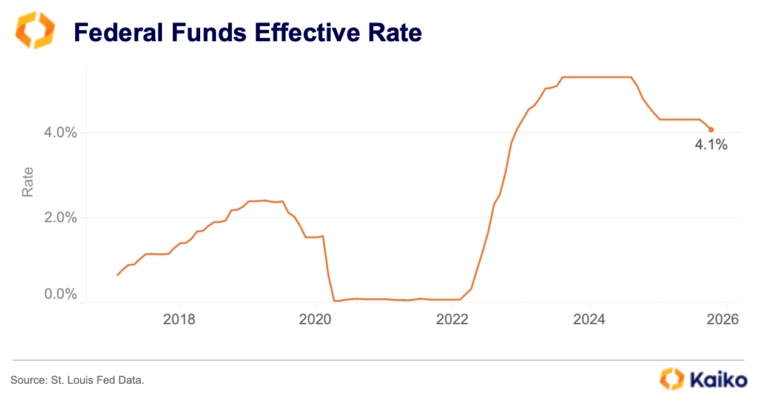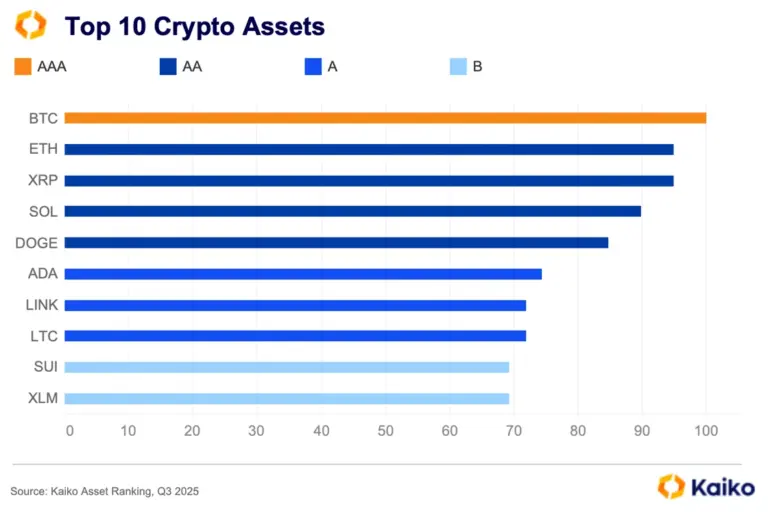What are the odds of Santa Rally?
With just over a week to go to Christmas there’s hopes of an end of year rally in crypto markets. The so-called Santa Rally is well known in traditional markets and typically occurs between the last five trading days of the year and the first two of the new year. It’s not as clear cut when it comes to digital assets.
Crypto can be tightly correlated with stocks, but it’s not always the case. Bitcoin’s correlation to the S&P 500 has come down from yearly highs of around 0.6 in November to close to 0.41 today.
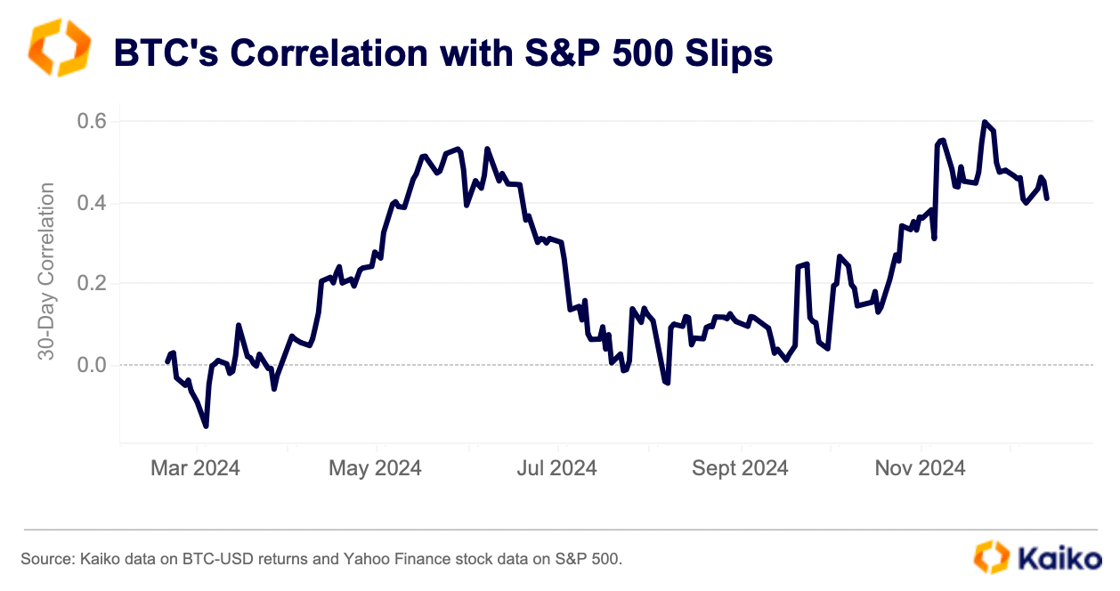
Furthermore, due to the 24/7 nature of crypto markets its gains and losses aren’t confined to normal trading windows.
This can be good or bad. We saw prices plunge over the first weekend of August for instance, as macro fears shocked the market. Overnight we’ve seen the good, as BTC notched its latest record high above $106k.
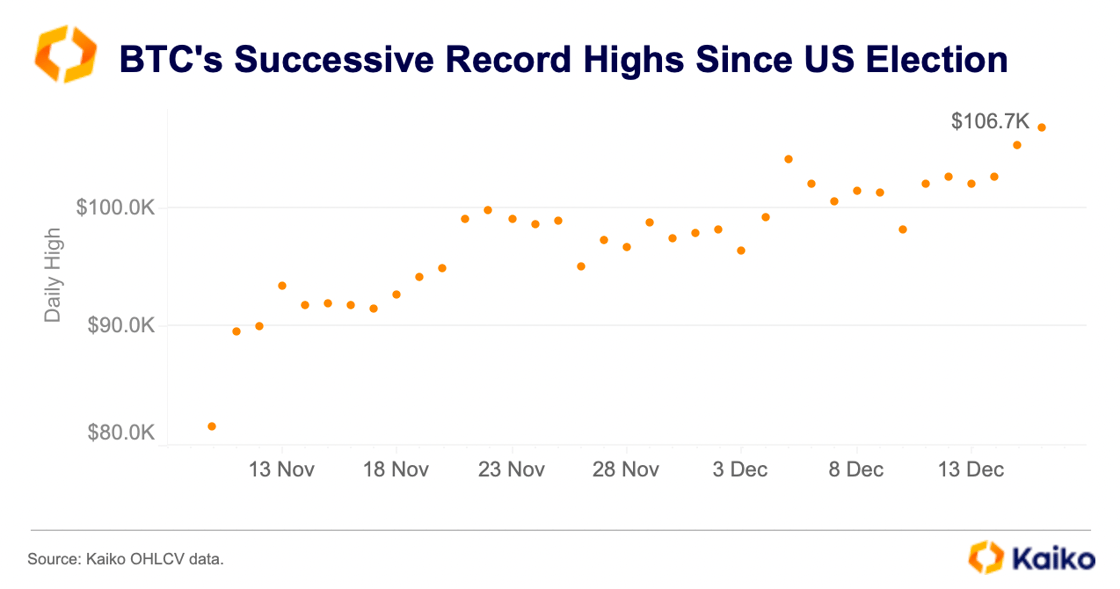
While crypto trade volumes do cluster around US trading hours, most of the gains in recent weeks have come after the US close. Many of BTC’s consecutive record highs since the US election have been recorded late into the day in the US, or early morning in Europe.
What does this tell us about the potential of a “Santa Rally” in crypto markets? For one, it’s unlikely to follow the same rules as equities, despite BTC ETFs driving price discovery this year. The potential end of year rally is more likely to be tied to crypto-specific venues. This includes Deribit, where the December 27 expiration has been heavily traded, with over $640mn in open interest now on the $120k strike.
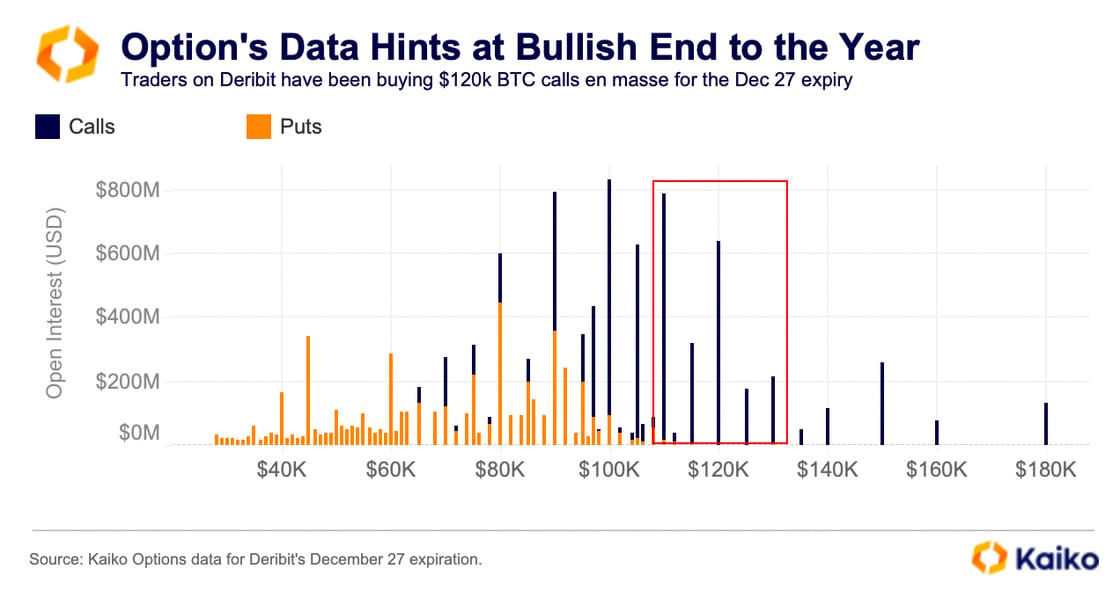
We’ve seen a lot of volume on this particular strike since before the US election, with volumes picking up again after the result was confirmed. How likely is it that these options will expire in-the-money though?
An options delta can be used as an approximation of its probability of it finishing in-the-money. If we use our implied volatility data to look at the delta of these different strikes then we can infer a roughly 10% chance that these options expire profitable.
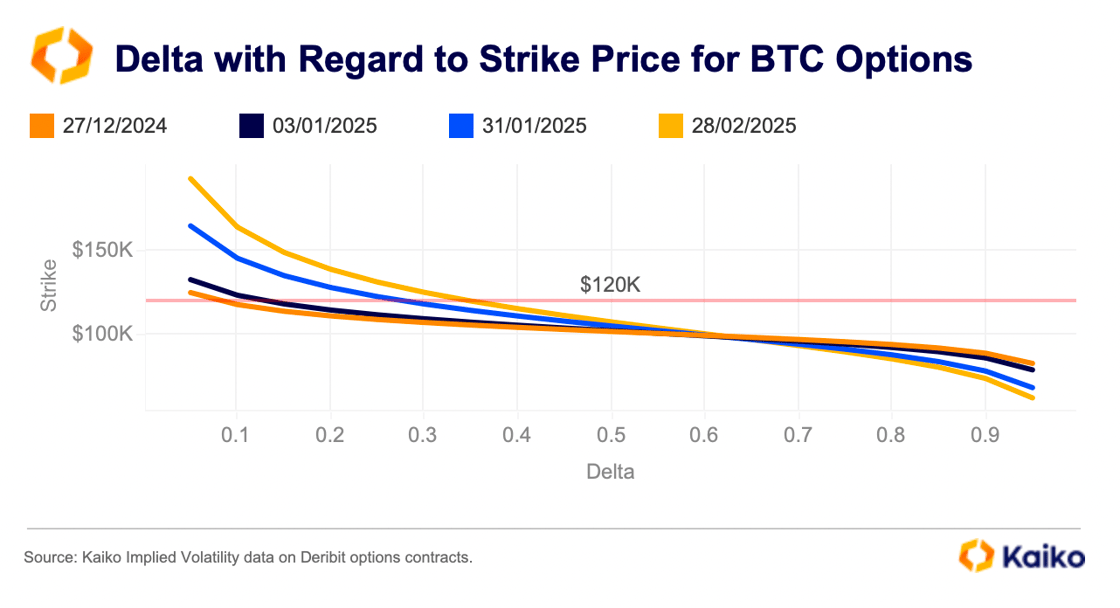
While the chances of BTC gaining another $15k in the next ten days or so are slim, this doesn’t mean there won’t be gains in other assets.
Last year’s end of year rally in crypto markets was dominated by BTC and driven by traders anticipating the approval of spot BTC ETFs. This year the set up is a lot different.
Any upcoming rallies will likely be much broader than last year. Since the election smaller Layer-1 coins have been outperforming BTC and ETH as traders repriced risk amid regulatory shifts in the US. We’ll discuss sector performance’s later in more detail.
Data Points
Best performing crypto sectors in 2024.
Bitcoin has been the story of 2024. The leading digital asset by market cap has dominated headlines and returns since January when the first spot BTC exchange-trade funds launched in the US.
However, sector performances look a little different, particularly since the US election in November. As we can see below the Vinter Layer-1 Top 10 has massively outperformed other indices since November 6.
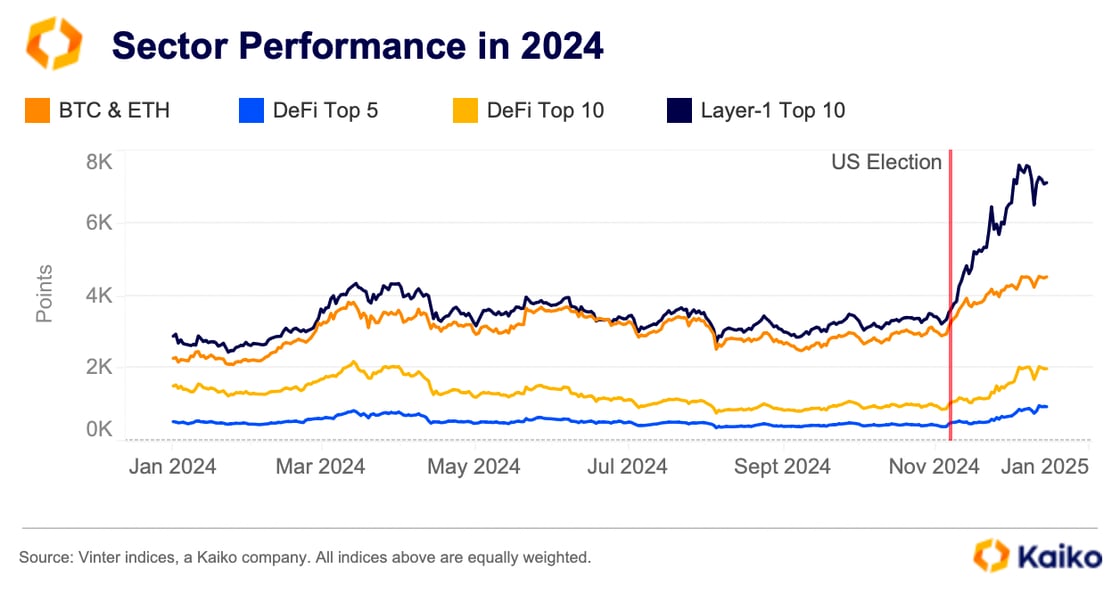
The BTC and ETH equally weighted index has risen a whopping 56% since November 6. At the same time both the DeFi top 5 and top 10 experienced double digit gains. None of them come close to the Layer-1 top 10 which is up over 120%.
On risk-adjusted basis the index’s returns are also better. The Layer-1 top 10 has a Sharpe ratio of 1.03 versus the BTC and ETH index’s 0.91. A Sharpe above 1 is considered okay, anything below 1 is poor. It should be noted that the margins are quite tight.
The outperformance has largely been driven by SOL, XRP, and ADA. All of which have either hit new all-time highs or multi-year highs since the election in November. These assets are all set to be major winners amid changing regulatory landscape in the US as SEC chair Gary Gensler is set to leave the agency.
The race for stablecoin dominance heats up.
Since the implementation of MiCA in June, MiCA-compliant stablecoins like Circle’s EURC, Société Générale’s EURCV, and Banking Circle’s EURI have gained momentum, now accounting for over 92% of the euro stablecoin market, compared to only 20% previously.
On the other hand, non-compliant EUR stablecoins like Tether’s EURT have seen decreasing demand, with Tether recently announcing it will discontinue EURT. Our latest report on the State of the European Crypto Market dives deeper into these trends.
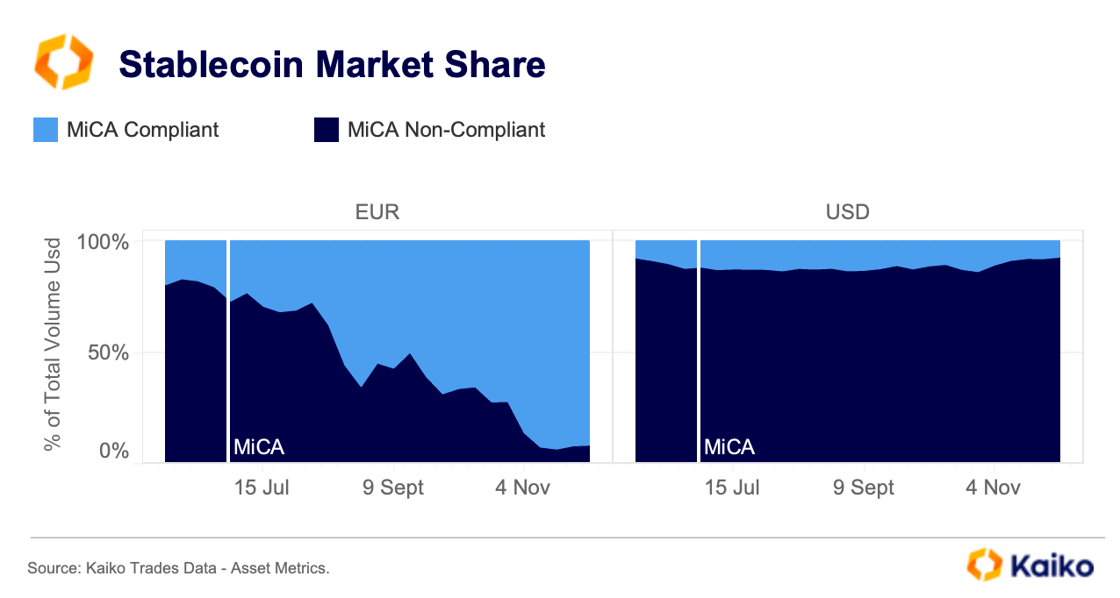
As of now, MiCA’s impact on USD-backed stablecoins has been minimal. Tether’s USDT, which is not MiCA compliant, actually saw an increase in market share in November, even though it was delisted from several major exchanges for EEA users.
However, this could change, as Binance—the largest stablecoin market—announced a strategic partnership with Circle, the issuer of USDC, last week. This partnership, which goes beyond simple zero-fee promotions, is expected to drive higher adoption for USDC, especially as Binance plans to use it for its Treasury.
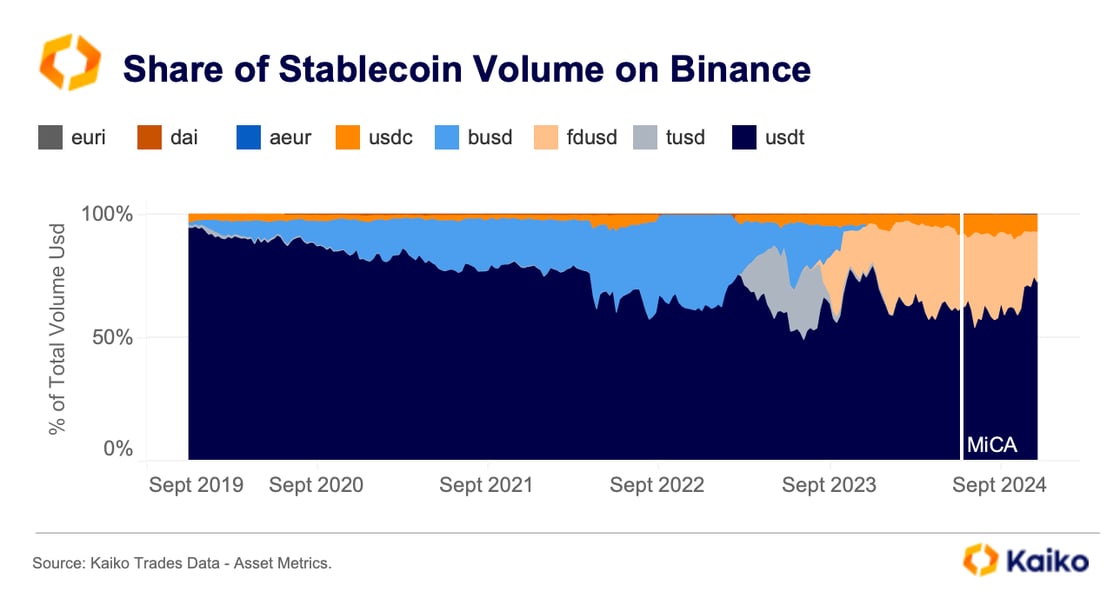
Currently, USDC ranks as the third-largest stablecoin on Binance with a market share of 7%, after USDT (75%) and FDUSD (19%). However, FDUSD, which filled the gap left by BUSD and TUSD, has experienced significant selling pressure during recent sell-offs, raising questions about the sustainability of its market share.
Japanese crypto exchange Coincheck goes public.
Last week, Coincheck Group, parent company of one of Japan’s largest crypto exchanges, began trading on Nasdaq through a merger with SPAC Thunder Bridge Capital. This makes Coincheck the second publicly traded crypto exchange after Coinbase, with an initial implied market capitalization of $1.3 billion. The merger process, which started nearly three years ago, aims to attract both international and domestic investors.
Japan’s crypto market, one of the oldest in the industry, saw a relative decline during the 2021/2022 bull run. However, as we noted last week, the market appears well-positioned for a rebound, driven by growing local demand for Bitcoin exposure.
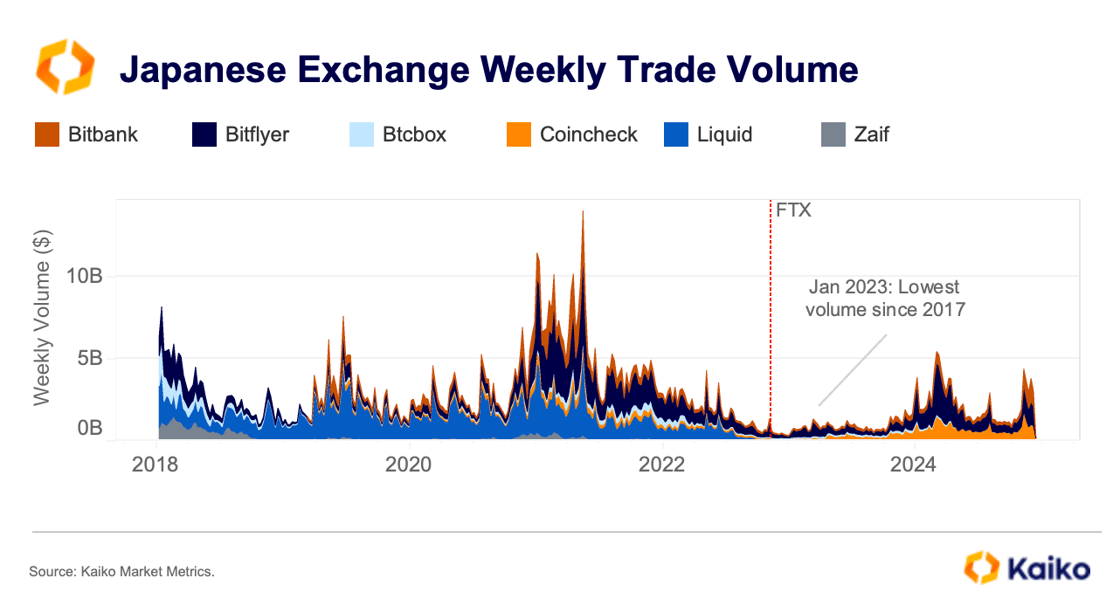
Trade volumes on Japanese exchanges rebounded in 2024 after lagging behind other markets following the FTX collapse. Notably, the market share of Japanese exchanges relative to South Korean exchanges increased this year, reaching approximately 8%, the highest level since 2020, signaling strong relative growth.
Coincheck’s weekly trade volume hit a record $1.7 billion in November before easing in December, solidifying its position as Japan’s second-largest exchange with 36% market share.
Following this successful launch there were further crypto-related developments out of Japan. Reports on Saturday revealed one Japanese politician has tabled a proposal for the government to start its own Bitcoin reserve. This follows similar developments in the US.


![]()
![]()
![]()
![]()













